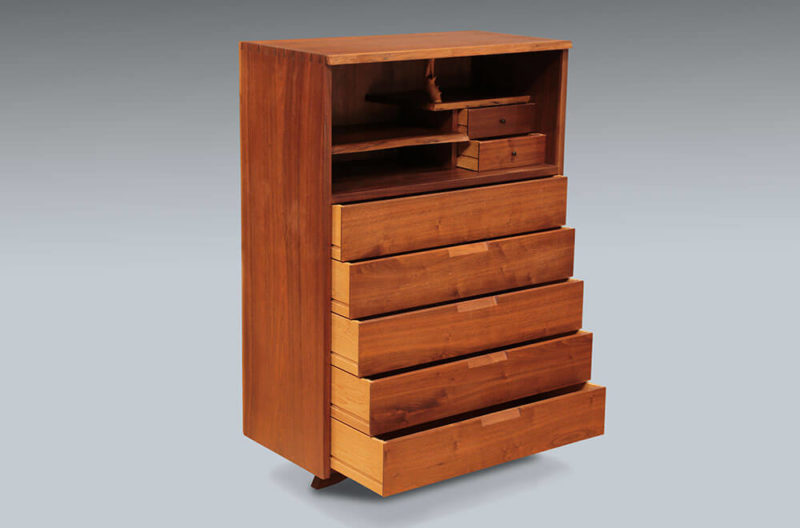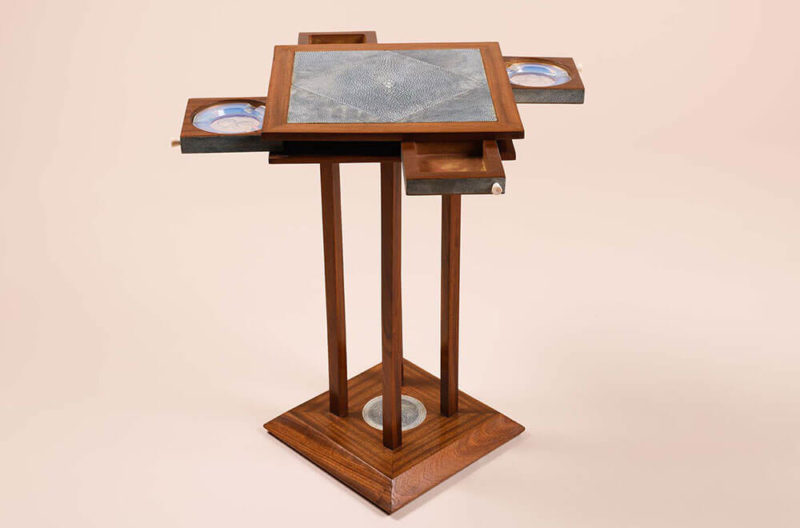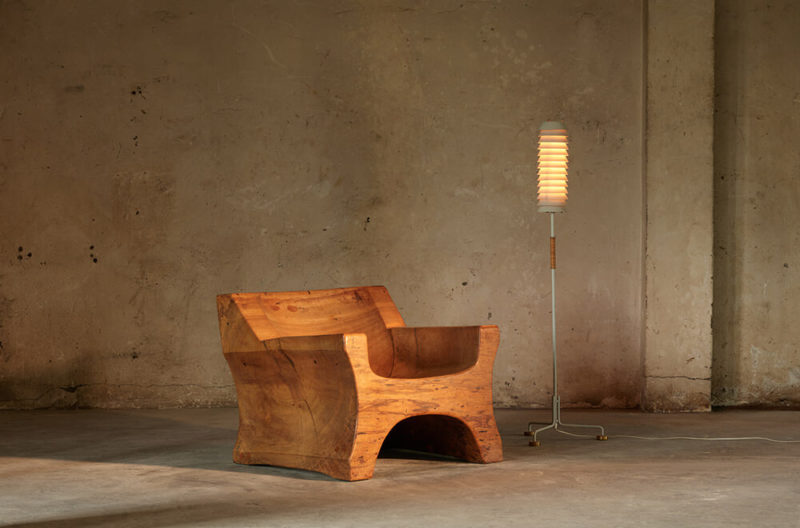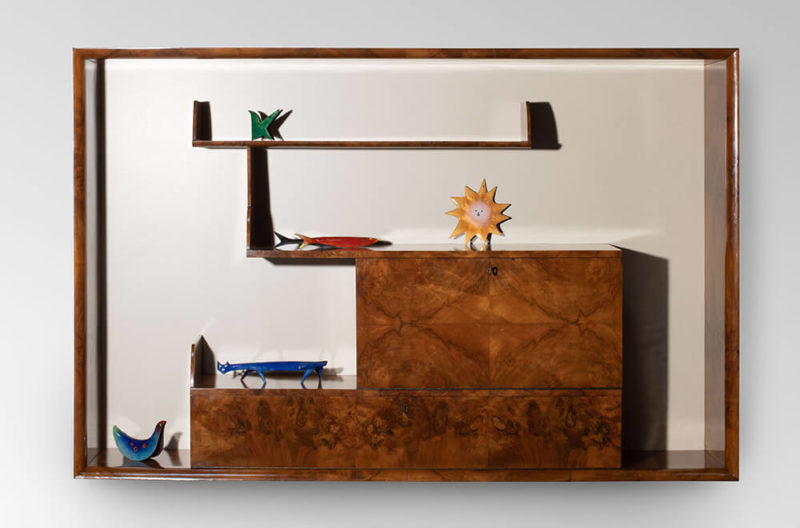Jean Touret
Two simultaneous exhibitions highlight the category-defying work of the 1950s furniture designer, who set up Les Artisans de Marolles.
Galerie Desprez-Breheret
‘Jean Touret et le Mobilier de Marolles’
Until 30th April 2022
Galerie Yves Gastou
‘Jean Touret: Résurrection’
Until 30th April 2022
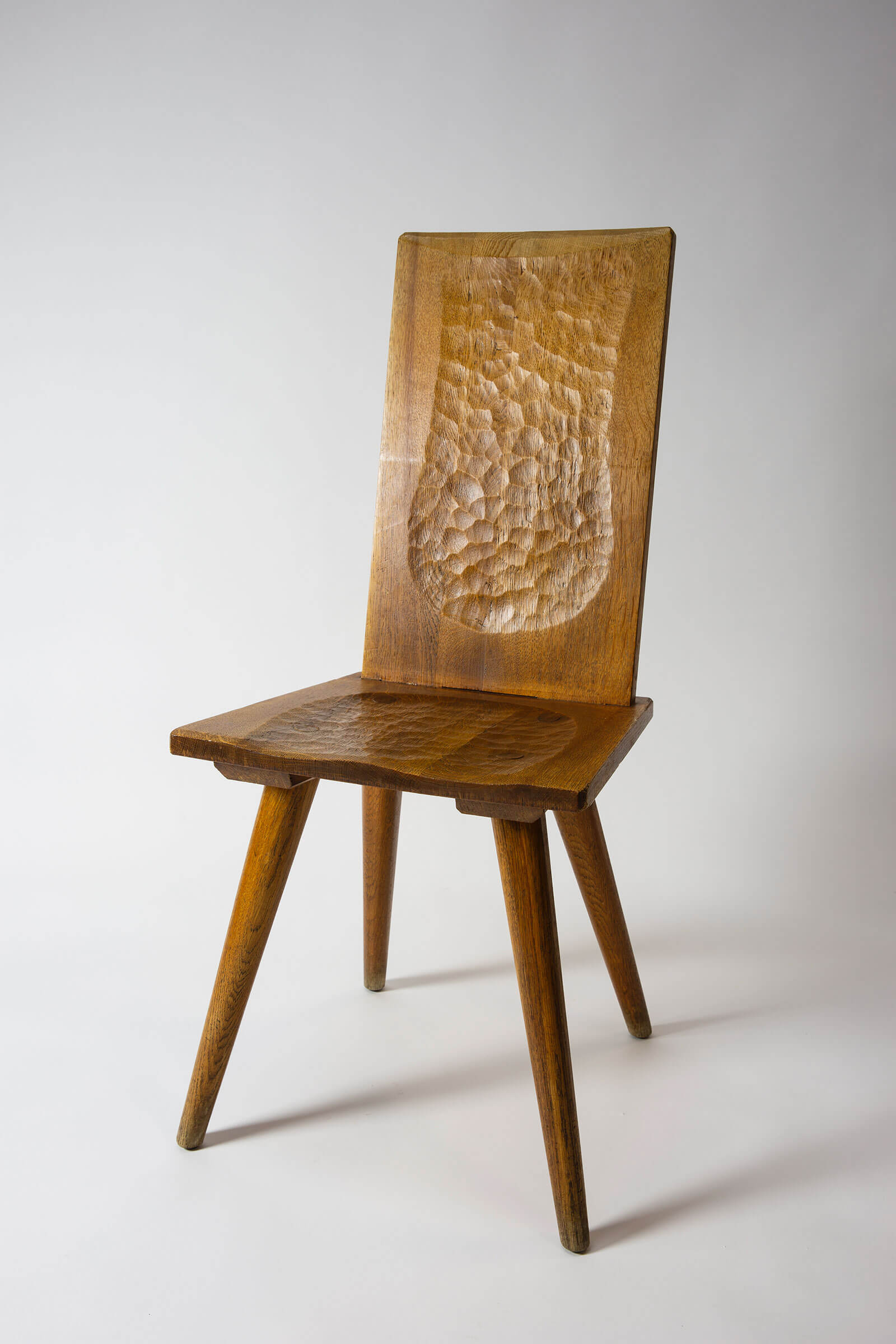
Jean Touret, chair, circa 1950
COURTESY: Jean Touret & Galerie Desprez-Bréhéret
IF YOU VISITED Notre-Dame cathedral in Paris before the devastating fire three years ago, you might remember the bronze altar with prophets and evangelists sculpted in relief by Jean and Sébastien Touret. What you might not know is that decades before the father and son duo undertook the prestigious commission, Touret senior had founded a guild of craftsmen in the 1950s and carved pieces in oak.
Defying categorisation, Jean Touret was a furniture designer, craftsman, sculptor and painter as well as a devout Catholic humanist. However, his rich body of work has remained largely under the radar. This month, two Parisian galleries showcase its multifaceted range in a bid to bring the artist more posthumous recognition.

Jean Touret Atelier de Marolles, ‘Sideboard’, 1958
COURTESY: Jean Touret & Galerie Yves Gastou
Galerie Desprez-Bréhéret, founded by Hélène Bréhéret and Benjamin Desprez, is presenting oak furniture and wrought-iron lighting created when Touret was artistic director of the collective Les Artisans de Marolles. The gallery also displayed similar works by Touret in a living room environment at PAD earlier this month, winning the best stand prize.
“Touret is one of the last French names from the 1950s that had not been recognised, documented, or shown in a gallery – despite being historically important and having sufficient production to enter the art market,” Desprez says. He first came across Touret’s chairs 20 years ago through a colleague and was instantly intrigued. After looking more closely into his work and becoming “obsessed” by its “modernity and powerfulness”, he began collecting it a few years later with Bréhéret.
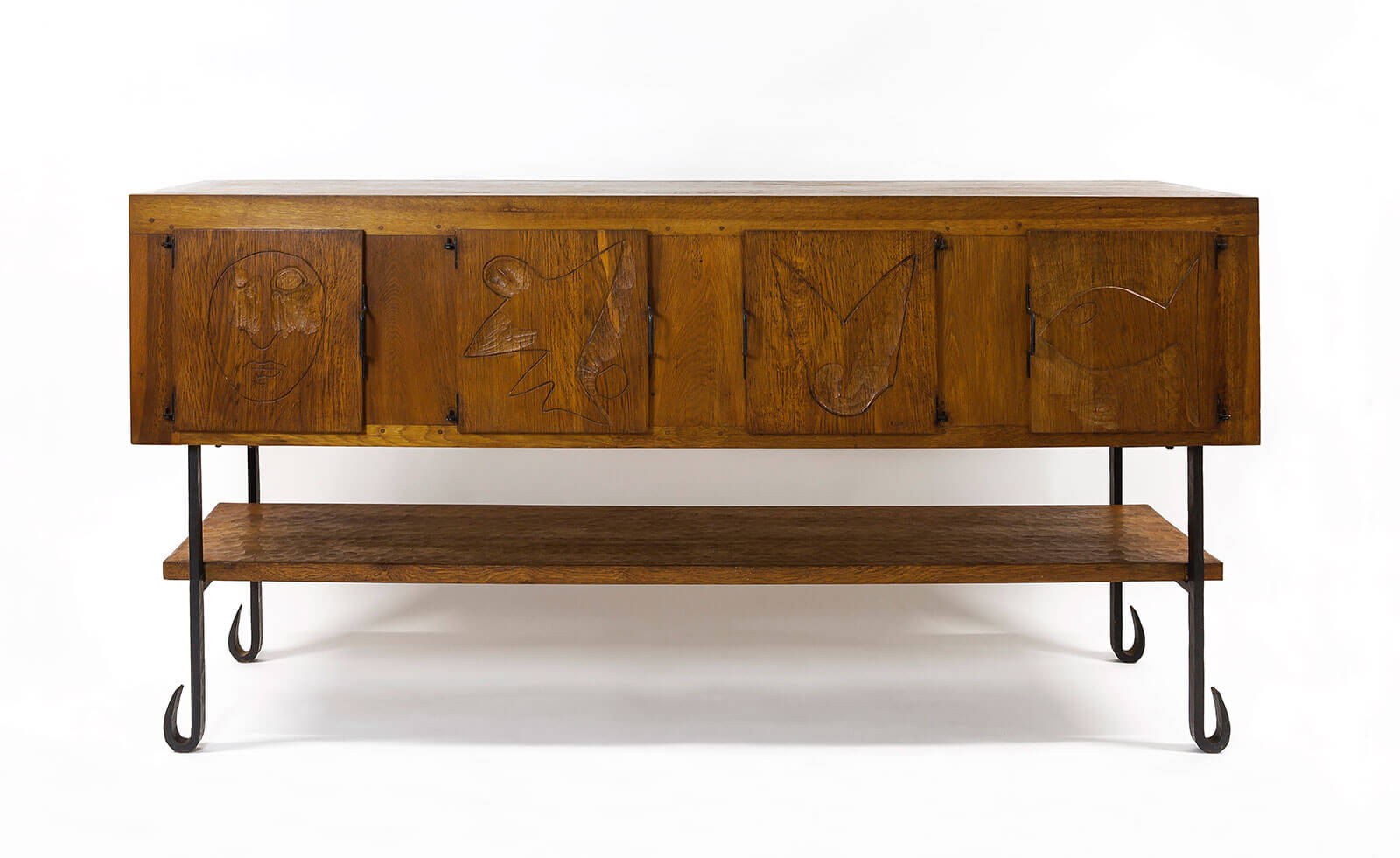
Jean Touret, ‘Quatre figures’ buffet, circa 1950
COURTESY: Jean Touret & Galerie Desprez-Bréhéret
Across the Seine, at Galerie Yves Gastou on the left bank, there’s a second exhibition ‘Jean Touret: Résurrection’. This features totemic figurative wooden sculptures as well as sideboards carved with bucolic scenes, mostly created after Touret’s tenure at Les Artisans de Marolles.
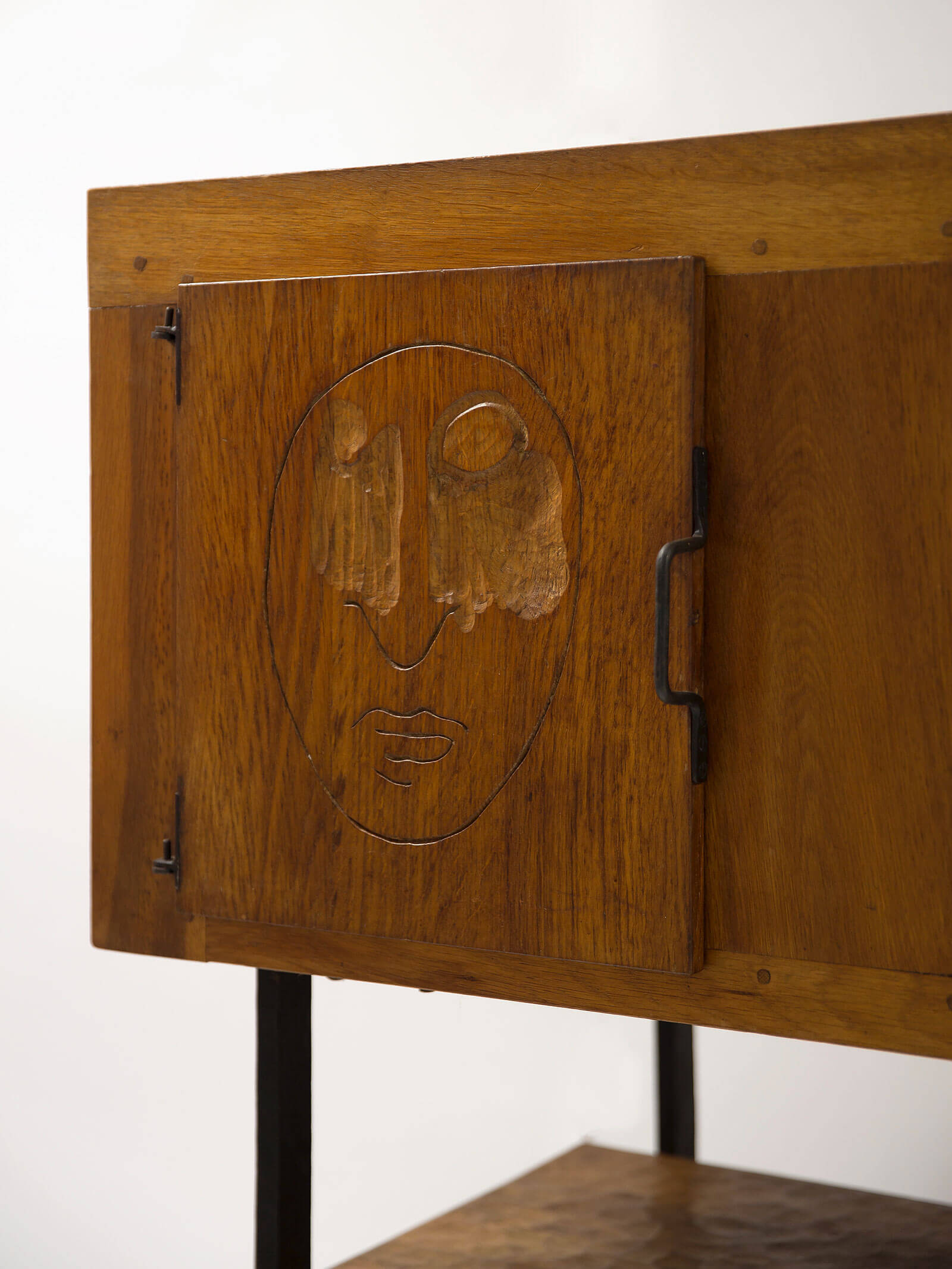
Jean Touret, ‘Quatre figures’ buffet, circa 1950 (detail)
COURTESY: Jean Touret & Galerie Desprez-Bréhéret
“We decided to do a double exhibition in order to show the importance of Touret’s work and this enabled us to present two periods,” explains Victor Gastou. “The facades of his sculpted sideboards reveal a great sculptural talent [while] the totems, or prophetic sculptures, have an extraordinary presence and soul, exuding such a strong energy that one has the impression that they’re like companions.”
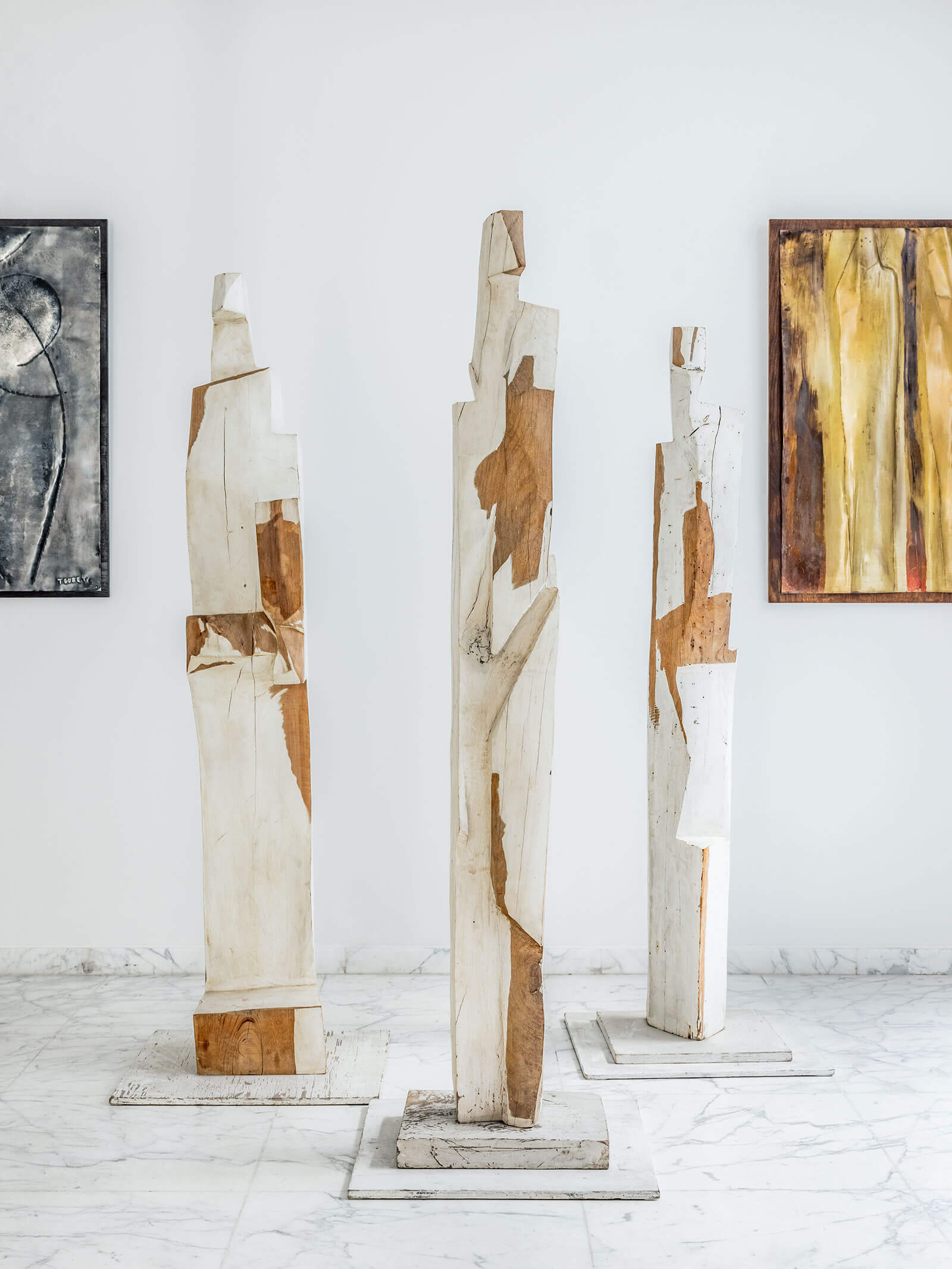
Jean Touret, ‘Les Porteuses d’Urnes’, circa 1980
COURTESY: Jean Touret & Galerie Yves Gastou
Born in 1916, Touret grew up in the countryside of the Mayenne region in northwestern France and Le Mans in the Loire valley. Having worked for an insurance company and taken evening classes in drawing, his perspective changed during the second world war when he was a prisoner of war in rural Germany. Observing loggers felling trees, he was entranced by their seemingly uncomplicated way of life. Shortly after his return to Le Mans, Touret and his wife, Odile, moved to the village of Marolles in the Loire valley where Touret devoted himself to painting and taught drawing at a local secondary school.
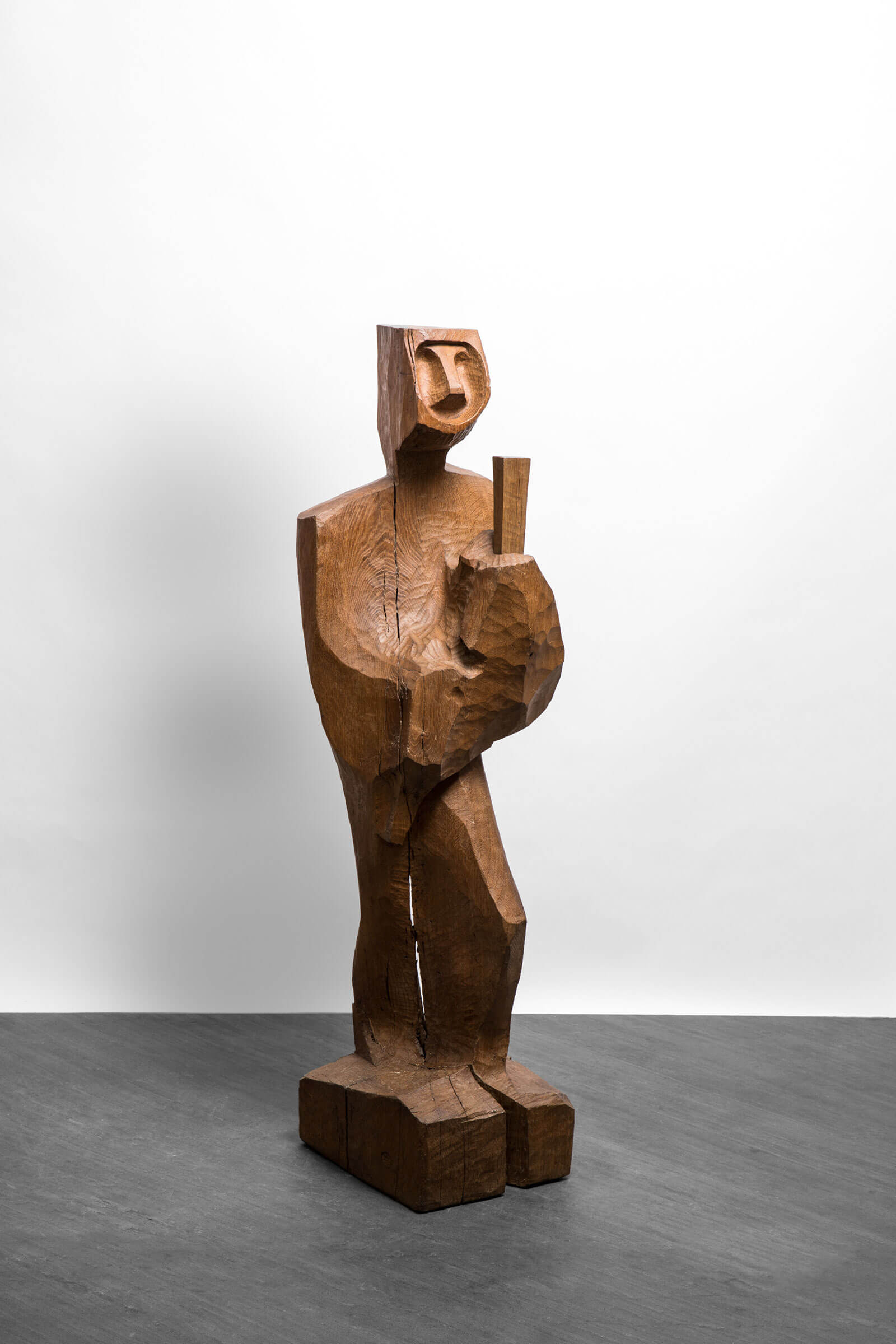
Jean Touret, ‘Le Chevalier’, circa 1970
COURTESY: Jean Touret & Galerie Yves Gastou
Touret’s idea to establish Les Artisans de Marolles in 1950 came about serendipitously. Next to the village tobacconist was a carpenter’s workshop; there Touret learnt how to make a bench for his seven children, merging his artistic inclination with his fondness for wood. Aspiring to elevate the livelihood of the local craftsmen, Touret set up an association with the carpenter, basketmaker, potter and blacksmith. His goal was to create locally produced furniture and lighting in opposition to the mass-manufactured formica products.
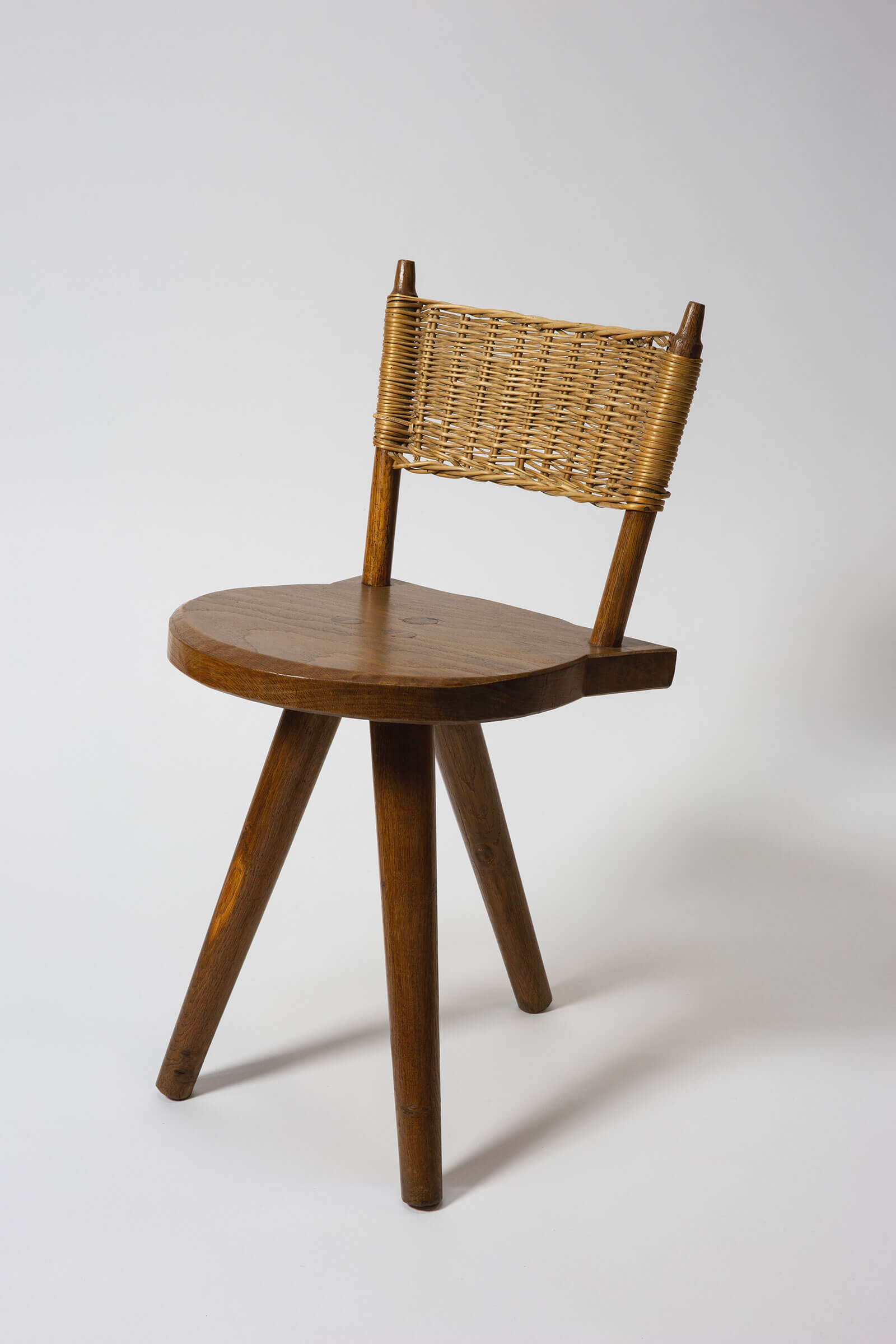
Jean Touret, chair, circa 1950
COURTESY: Jean Touret & Galerie Desprez-Bréhéret
Over the years, the guild grew and, from 1958 to 1965, it was invited to stage exhibitions inside the royal Château de Blois. Touret resigned in 1964 and henceforth focused on his own work and religious commissions.
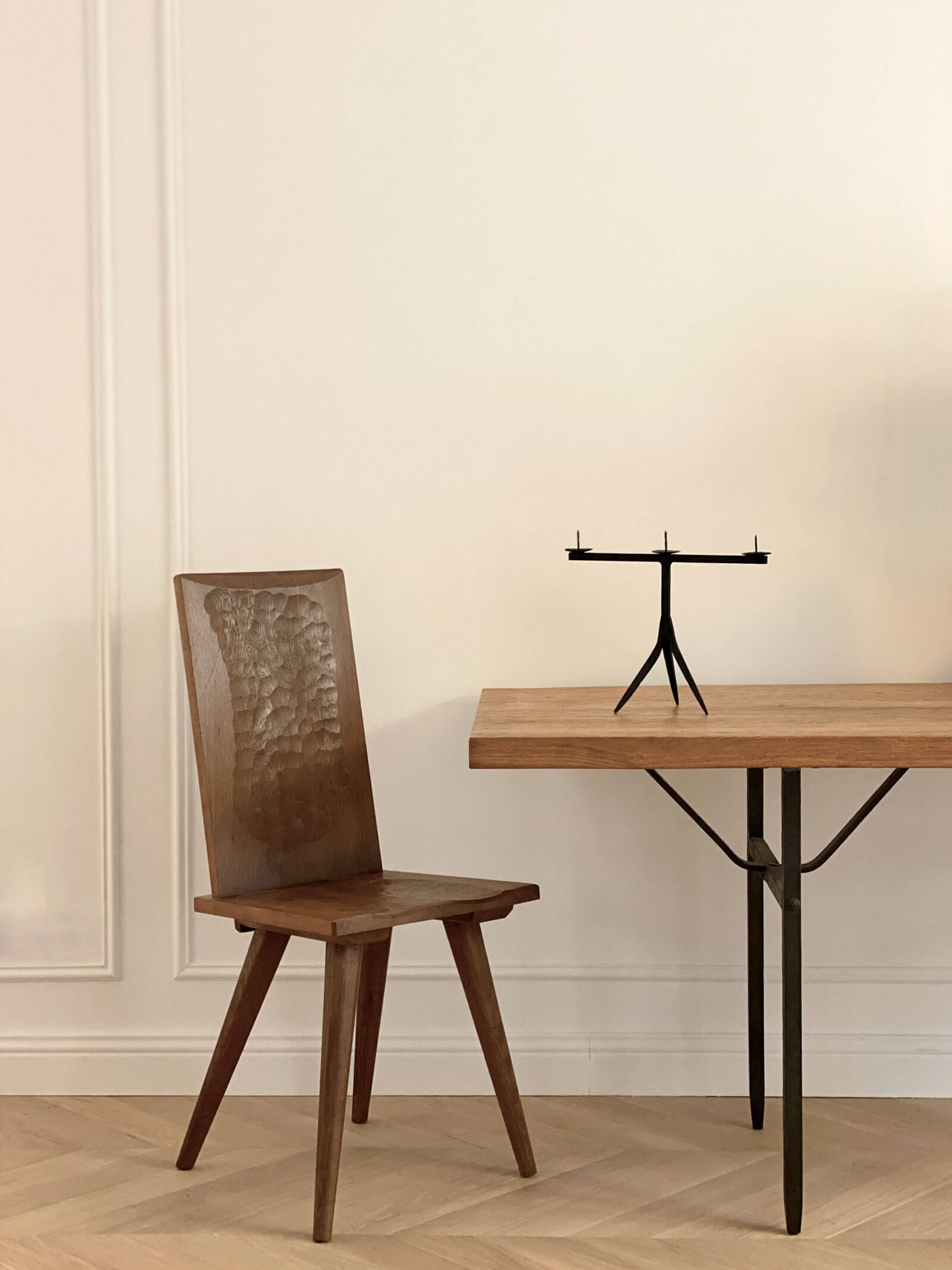
Jean Touret, chair, circa 1950
COURTESY: Jean Touret & Galerie Desprez-Bréhéret
The techniques that characterised the output of Les Artisans de Marolles are highlighted in Galerie Desprez-Bréhéret’s exhibition. The surfaces of the oak furniture have a rippling “honeycomb” finish, lending softness and sensuality, thanks to having been worked with an adze or a gouge. Carved faces and abstract shapes have been carved onto a sideboard while a three-legged stool has a woven backrest, turning it into a workshop chair. Also on view is another side of the association’s production: the splendid wrought-iron lamps, with iron spirals round the white cylinders, that offer a counterpoint to the wooden furniture.
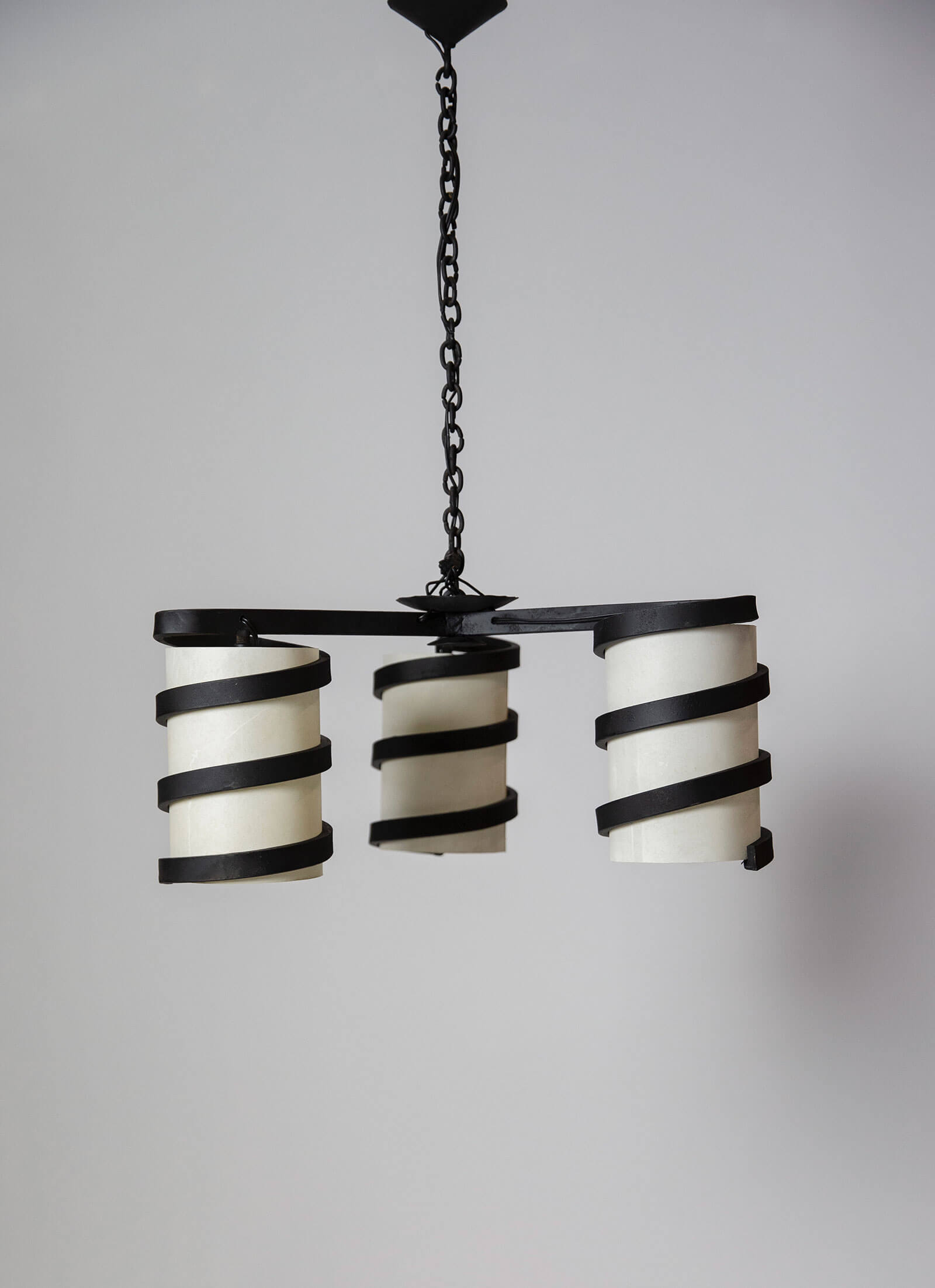
Jean Touret, light, circa 1950
COURTESY: Jean Touret & Galerie Desprez-Bréhéret
How Touret developed his own artistic language after Les Artisans de Marolles shines through in Galerie Yves Gastou’s exhibition. It assembles towering figurative sculptures and partially painted white and zinc wall panels decorated with abstracted feminine silhouettes (both circa 1980) – among other works – revealing Touret’s admiration for Matisse and Modigliani. There’s also an iron-and-wood sideboard featuring animals made at the Marolles atelier in 1958 and a lectern in the form of an eagle with outspread wings denoting his religious convictions.
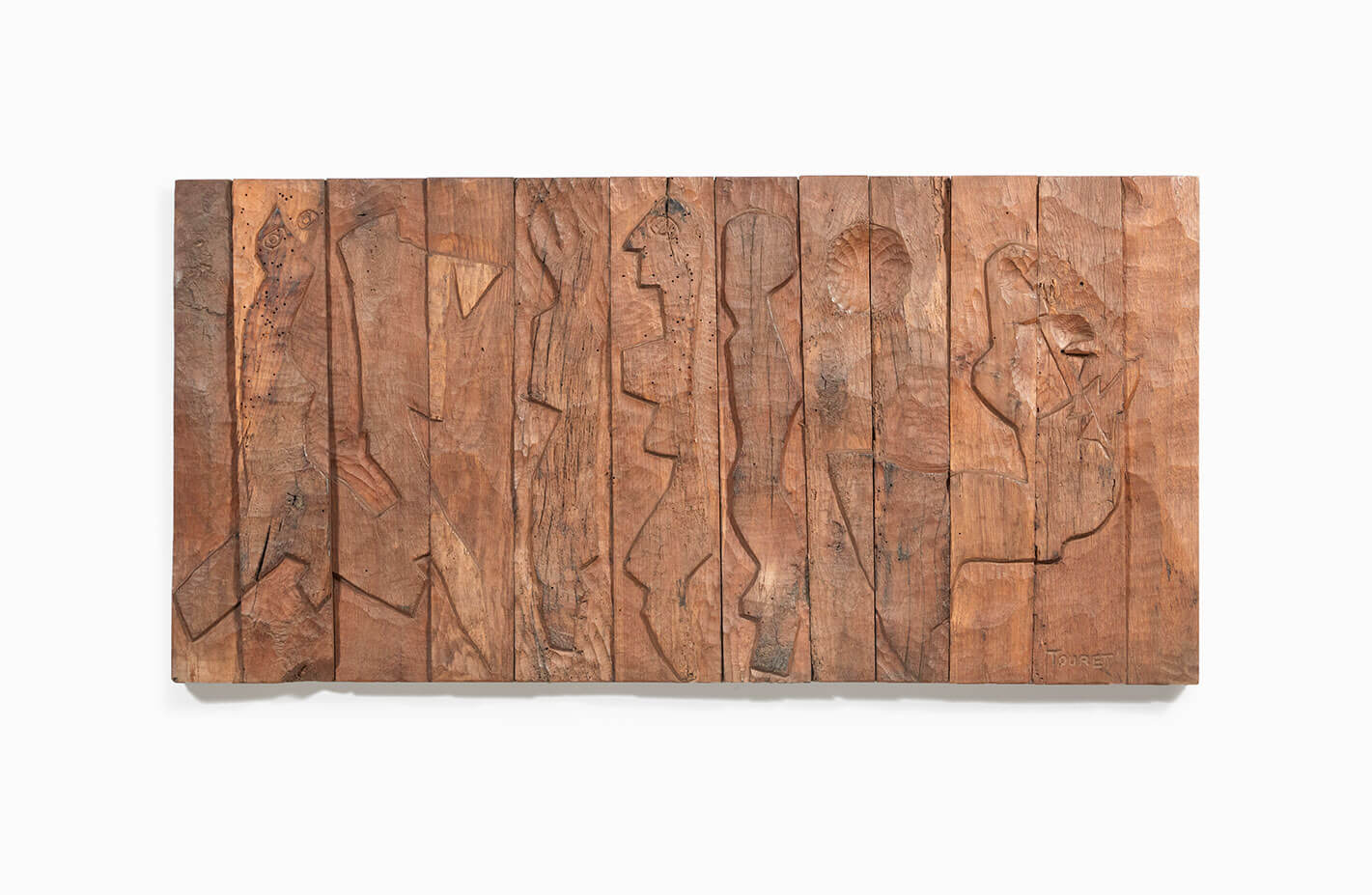
Jean Touret, ‘La Fête’, circa 1955
COURTESY: Jean Touret & Galerie Yves Gastou
These two exhibitions powerfully convey that there’s far more to Touret’s legacy than just the Notre-Dame altar undergoing renovation.
‘Jean Touret et le Mobilier de Marolles’ at Galerie Desprez-Breheret.
‘Jean Touret: Résurrection’ at Galerie Yves Gastou.
A monograph on Jean Touret’s work, published by Les Éditions de l’Amateur was launched on 28th April at 17 Rue Visconti, Paris 75006. For more information please email: rsvp@favoriparis.com




